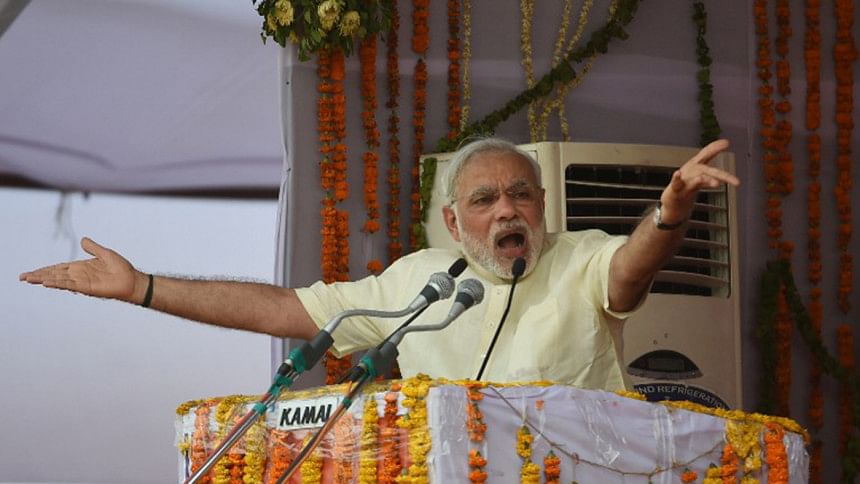From murky to magical

The world does not look away when Indian Prime Minister Narendra Modi speaks. As an early score, Modi cut an impressive figure on the global stage when he spoke to a cheering crowd -- of mostly Indian Americans -- in New York's Manhattan area last September. The world was enchanted by the "aura" around him. His speech was steeped in optimism and hope. The global media was awestruck.
Modi, the second most popular politician on Twitter after US President Barack Obama, has successfully used social media to shape his public image as a tech savvy leader, according to a study at the University of Michigan's School of Information.
Modi rarely gives the mainstream media direct access -- no face-to-face interviews to Indian journalists. He runs his own advertisement. He has a message out at every conceivable opportunity, communicating directly with people to tell them what he thinks is important, what his side of the story is.
His twitter handle has 12.8 million followers, more than any newspaper in India boasts.
On Thursday, Modi twitted about his Bangladesh visit, writing: "I am confident that my Bangladesh visit will enhance our ties & will be beneficial to people of both our nations."
He maintains a Facebook page which has 28 million likes, and he also has a 'discussion over tea' campaign in which he chats about national issues over tea with citizens via online video.
With his charisma and crossover appeal, he helped reshape the world's view of India. India has changed its view of Modi as well.
That's why Obama writes on him: "Like India, he transcends the ancient and the modern—a devotee of yoga who connects with Indian citizens on Twitter and imagines a 'digital India'."
Modi was once unwanted in Washington—he was denied a visa to the US after the communal riots in Gujarat in 2002, in which more than 1,000 people, mostly Muslims, died while he ran the Indian state.
He has walked past the controversy -- the stigma that dogged him for more than a decade.
Modi, 64, surprised the world a year ago when his Bharatiya Janata Party won the first majority in the lower house of parliament in three decades. Goldman Sachs Group called Modi "an agent of change," while BNP Paribas said India's "Reagan-Thatcher" moment would bring subsidy cuts, more investment and a simpler tax regime.
Inspired investors poured a record $42 billion into Indian stocks and bonds last year. Falling oil prices helped bring down one of Asia's fastest inflation rates, and revised gross domestic product figures put growth on par with China's. Credit-rating companies upgraded India's outlook.
But one year on, the initial euphoria at home seems to be fading.
Modi, whose election last May fuelled hopes that he would unleash India's economic potential, finished his first year in office with few major legislative victories.
Lawmakers delayed voting on a proposal to create a national sales tax, one of the country's biggest economic reforms in decades. Another bill to make it easier to buy land was also sent to a committee.
Difficulties of governing a diverse nation of 1.2 billion people reasserted themselves. Money is starting to leave Indian shores as investors fell out of love with him due to slow reforms. A rebound in oil prices threatens to stoke inflation.
However, Modi's loud, ubiquitous one-man show continues to generate a feel-good buzz.
He understands India could never really emerge as an independent global power if it could not clean up its act in its regional backyard.
So, right from the start, when he scored a big coup in inviting South Asian leaders, including Pakistan's prime minister, to his inauguration, Modi has displayed a decisive and deft touch.
As Modi is visiting Bangladesh for the first time, there is hope in the air: he will tear down some barriers. Ending a border dispute that predates Bangladesh's founding in 1971 is one of the transformative moments -- an effort to end a historical anomaly.

 For all latest news, follow The Daily Star's Google News channel.
For all latest news, follow The Daily Star's Google News channel. 



Comments